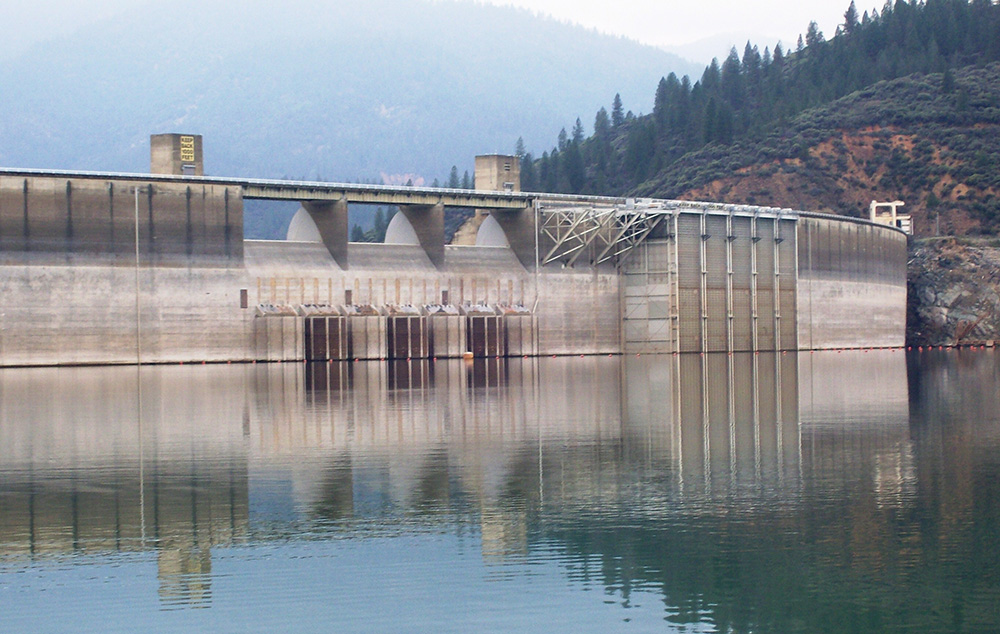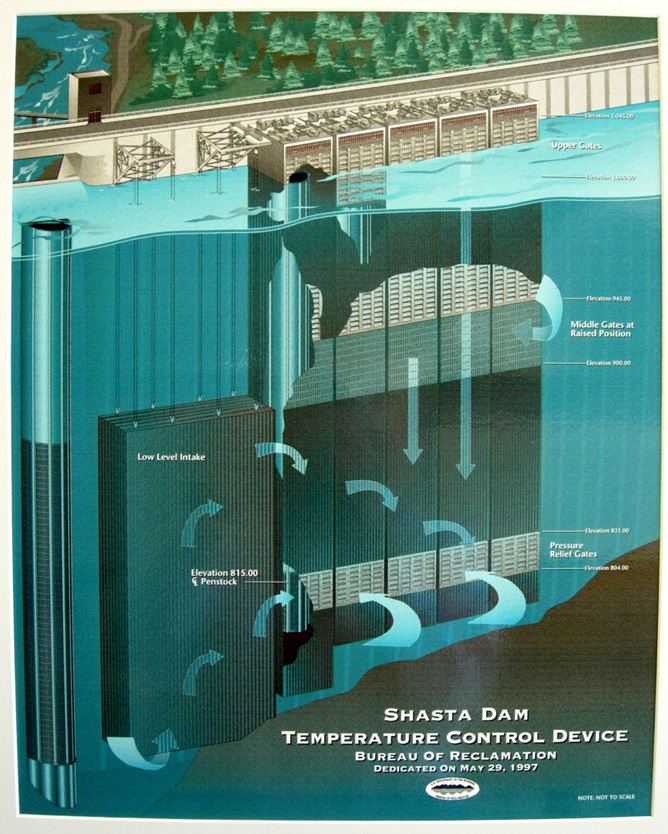Shasta Dam Temperature Control Device


With the completion of Shasta Dam in 1945, the natural migration of Chinook salmon and steelhead on the Sacramento River was blocked. This, coupled with earlier mining, logging, and fishing operations along the river, has caused the numbers of all salmon and steelhead runs on the river to decline.
With the endangered species listing of the winter-run Chinook, Reclamation and other federal and state agencies started looking at ways to protect this species. One of the things determined was that by providing colder water for optimal spawning, the Chinook will have a better chance at survival. This was to be part of a bigger project to provide sustainable habitat downstream of Shasta Dam for the salmon to spawn. The idea was to mimic the upstream environment that the salmon could no longer reach. Regulations were put in place to protect habitat from mining, logging, and fishing operations and a plan was devised to add spawning gravel to the river, as well as, design and build a selective intake structure for Shasta Dam to ensure the availability of cold water.
With the building of the Temperature Control Device, managers at Shasta Dam are now able to selectively withdraw water from a range of depths, including the deeper, colder water, sending it through the powerhouse generators, maximizing power generation, while at the same time meeting water commitments and environmental needs for the fisheries downstream.

